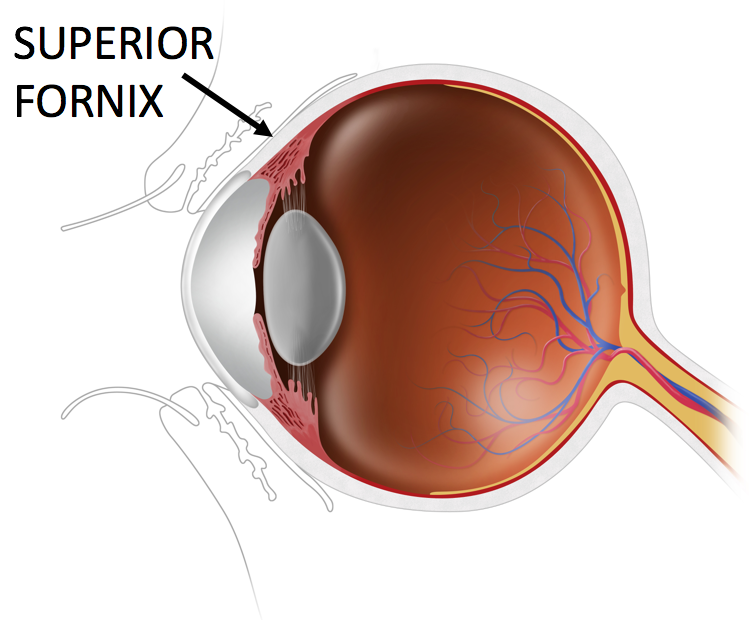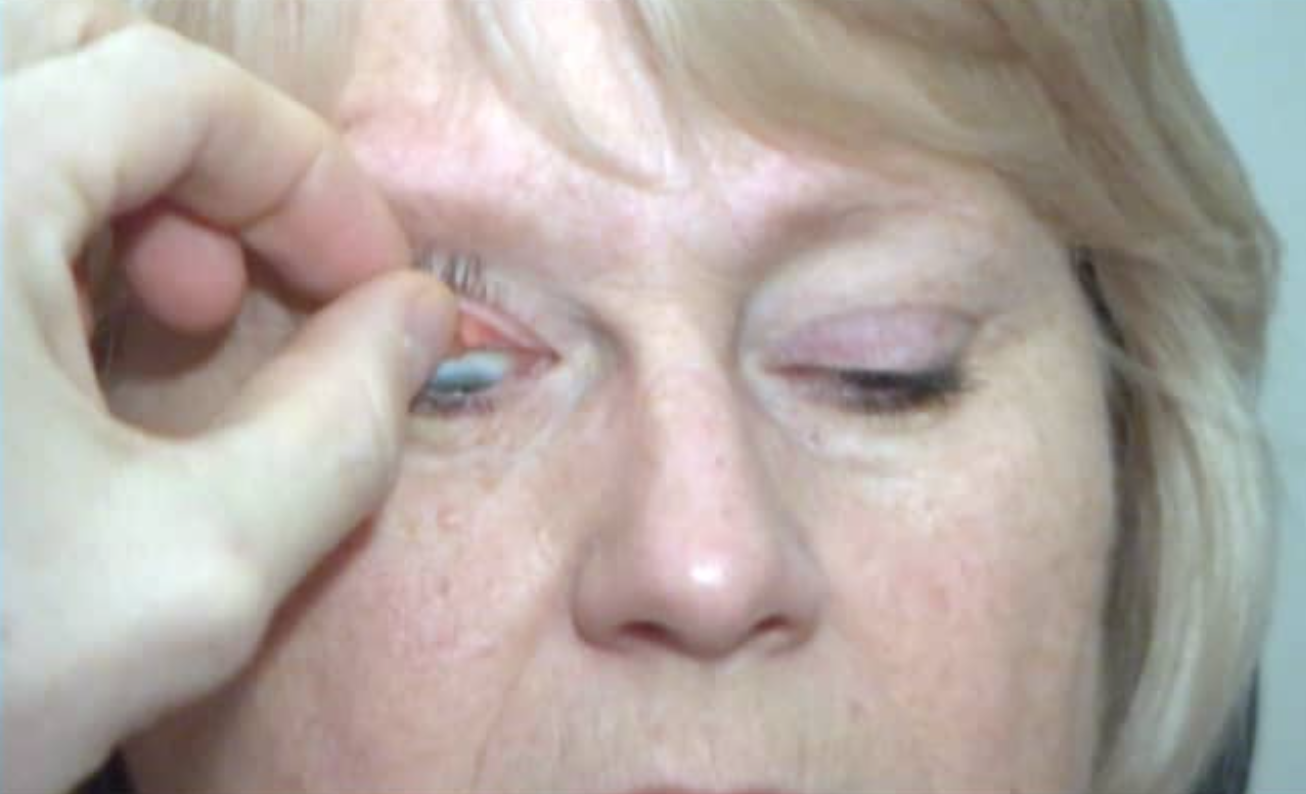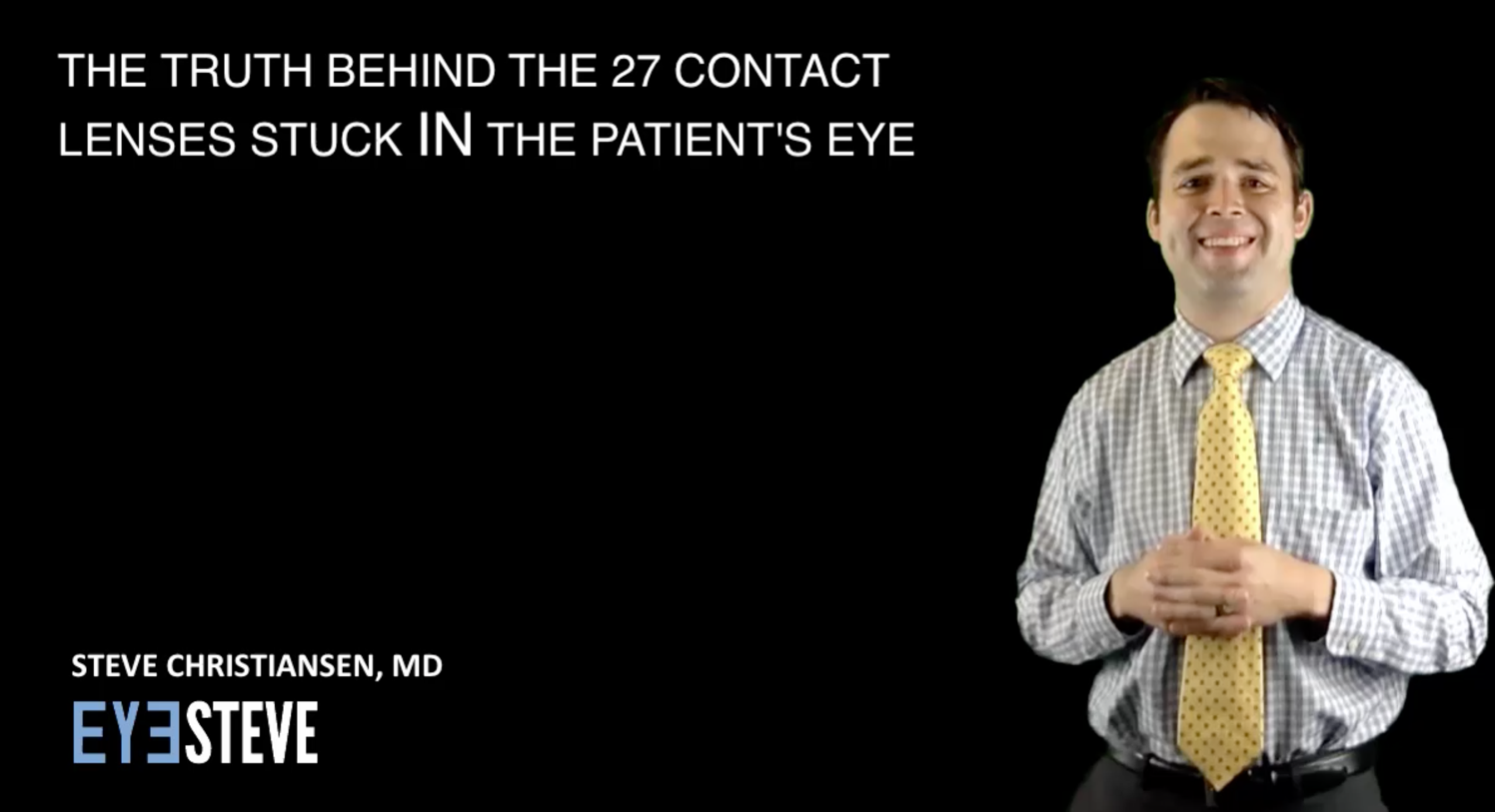By now I’m sure you’ve heard about British woman who reportedly showed up for cataract surgery only to have her doctors discover that 27 contact lenses were unknowingly stuck IN her eye. In this post (and video!) I will explain how this is possible by clarifying some basics of eyelid anatomy.
The headlines all talk about 27 contact lenses being stuck in, lodged in, and found missing IN this woman’s eye. When you read that headline, your mental fact-checker should be sounding alarms. Really? Were there really 27 contact lenses scattered in various places inside her eye?
And how could it be that her vision remained fairly clear and she asymptomatic before this discovery? Does THAT make sense? No, it doesn’t, and for good reason.
The article published in the British Medical Journal states that 17 of the contact lenses were found bound together by mucous in what is called the superior fornix, and an additional 10 were found using a microscope. What is the superior fornix, and why is this small detail so important to this story?
The superior fornix is almost like a pocket created by the inner lining, also known as the conjunctiva, which covers the eyelids and the surface over the white part of the eyeball itself. So, just to be clear, the contacts were not IN her eye, but were outside the eye, between the eye and the eyelids. Also, 17 of the lenses were clumped together with mucous, which the eye makes as a response to minimize infection and inflammation from a foreign object like a bunch of old contacts.
So is it actually possible that someone’s fornix could be so large as to hold 27 contact lenses? It certainly is. Look at this photo of a patient with what is known as floppy eyelid syndrome, where the tissues of the eyelid become lax and floppy. Notice the extent with which the upper and lower eyelids can be stretched, showing this large pocket of the upper and lower lid fornices.
Now we don’t know if the British patient had floppy eyelid syndrome, but you can see how large this forniceal pocket can become if the lids are lax, as they often are in similarly older individuals. The article did mention she had deep-set eyes, so her fornices were likely larger than normal, and better suited to conceal the lenses.
Finally, the paper talks about how the doctors used upper eyelid eversion to find the contact lenses. This video from the University of Iowa shows this technique, by temporarily folding the upper eyelid inside out, which allows for examination of the upper fornix.
So, in summary, here are five key takeaways from this interesting story.
- The upper and lower lid fornices are fairly large, and could conceivably hide 27 contact lenses.
- You can’t lose your contact lenses INSIDE your eyes or behind your eyes
- Please don’t misuse your contact lenses. Contacts are great, in fact I’m wearing them right now, but they can cause potentially damage in your eyes if used incorrectly.
I hope you have found this information to be helpful. Be sure to clarify with your friends and co-workers that the 27 contacts weren’t IN this patient’s eye, but were actually in the fornices.
For additional info about this interesting story, including a literature review of previously published reports of contact lenses being found around patient’s eyes, check out this excellent post by my ophthalmology colleague and friend, Ravi Goel, MD.











